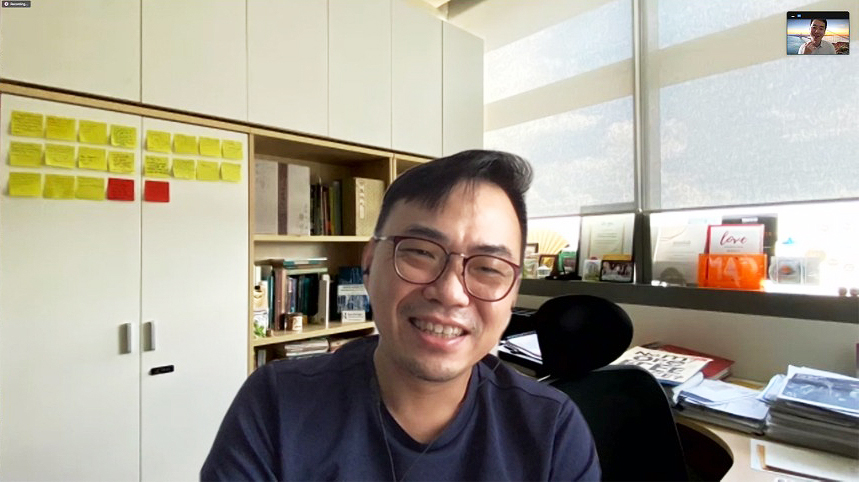Why Singapore’s English Teachers Should Embrace Singlish, Not Fight It
Is it time for Singaporean educators to embrace Singlish as a legitimate learning tool? What the Research […]
Read More
How does one do interdisciplinary learning in a manner that nurtures creativity? Associate Professors Yeo Kang Shua and Chong Keng Hua, both from the Architecture and Sustainable Design Pillar at Singapore University of Technology and Design (SUTD), remind us that architects have long been masters of interdisciplinarity. They draw from diverse resources of knowledge to solve fundamental human problems on the ideal spaces for living, working, and playing. They share with SingTeach how and why the value of creativity is important in their work.

Associate Professors Chong Keng Hua (pictured) and Yeo Kang Shua (not pictured) discuss the importance of creativity in education.
Creativity often involves risk-taking because oftentimes in the process of being creative, outcomes tend to be unpredictable and beyond our expectations. Kang Shua shares that the restoration of the Wak Hai Cheng Bio (Yueh Hai Ching Temple), which was built in the 1820s, was one of his favourite projects to work on.
“One common misconception (that even some of my students have) regarding conservation or preservation is that there is no need for creativity, as the main point of such projects is for the end result to look as if no one has done any treatment to it,” he says.
“In reality, substantial creative thinking and risk-taking are actually required to achieve this.”
Kang Shua elaborates on the considerable risks involved in the restoration project, such as taking down the roof, disassembling the timber structure, repairing it and then replacing it back very carefully.
“There are many unknowns in a restoration project,” says Kang Shua. “In order to mitigate the risks, my team and I studied the building in great detail, sourced for craftsmen overseas and investigated current conservation techniques that are scientific in nature.”
In Kang Shua’s opinion, a space for students to get creative from tinkering and making things also needs to be able to “tolerate mess”.
“In our contemporary parlance, this would be a makerspace,” he says. “A makerspace is not revolutionary in nature and simply allows students to have their own personal space for their computers, and tabletops to sketch and draw out ideas.”
Keng Hua adds that not only is the physical environment important, but also the sociocultural element of the space.
“As we tend to focus too much on particular skills, we forget that there are mindsets that need to change as well,” he shares. “Students need to learn to be collaborative, adaptive, and resilient – they need to work together with others when the inevitable unforeseeable futures present challenges to their preconceived assumptions.”
For creativity to be nurtured in students, Keng Hua opines that we need to move away from ticking off checklists of a student’s performance and instead, help them to connect the dots to see the connections across disciplinary silos.
Touching on the cultural aspect of the learning environment, Kang Shua says that a space that students can personalize and be at ease in should be provided for. “Students must be given ownership of the spaces,” he shares. “A safe space should be given to them to encourage them to fail, while making sure the system allows them to fail.”
The working world can be unforgiving to failure, and it is in the safe space of schools that learning from failure needs to be nurtured.
“In these spaces, we should also encourage them to experiment, empower them and not bog them down with too many institutional rules,” adds Kang Shua.
“Students need to learn to be collaborative, adaptive, and resilient – they need to work together with others when the inevitable unforeseeable futures present challenges to their preconceived assumptions.”
– Keng Hua on why the sociocultural element of a makerspace is just as important as its physical environment
More than just learning from words on paper, screens or in soundwaves, students should familiarize themselves with spatial thinking by learning with their hands, bodies and through interaction with things, says Keng Hua.
“I think it is important that students become more familiar with spatial thinking and a more holistic orientation to knowledge,” he says. “The goal is to be able to metaphorically extend these forms of thinking to develop relationships between concepts that have more depth, so that connections can be seen.”
“Connections can become visible when we allow them to occupy an expanded space, outside of a typical linear or even flattened manner of presentation,” he adds.
Kang Shua feels that a culture of experimentation is critical, so as to be able to imagine a problem from different perspectives. His work in architecture allows him to experiment with volumes and shapes, and try out different permutations.
“Critique between peers in the forms of sharing and discussion is also important for improving the quality of ideas,” he shares. “We need to move away from binary ‘right and wrong’ answers, and move towards a fuller understanding of ‘better and worse’, and why.”